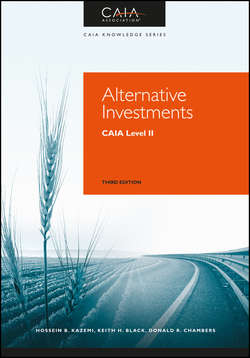Читать книгу Alternative Investments - Black Keith H. - Страница 51
На сайте Литреса книга снята с продажи.
Part 1
Asset Allocation and Institutional Investors
CHAPTER 2
Tactical Asset Allocation, Mean-Variance Extensions, Risk Budgeting, Risk Parity, and Factor Investing
2.4 Risk Parity
2.4.1 Three Steps in Implementing the Risk Parity Approach
ОглавлениеThere are three steps in implementing the risk parity approach:
First, similar to risk budgeting, risk parity requires a definition of the total risk of a portfolio. Risk parity does not impose a uniform measure of total risk. However, total risk is typically measured by the standard deviation of the rate of return on the portfolio. Alternatively, one could use value at risk (VaR) or some other measure of risk. The advantage of using VaR as a measure of total risk is that one can incorporate skewness and kurtosis into the measure of total risk. For the purpose of this discussion, standard deviation is used as a measure of total risk.
Second, risk parity requires a method to measure the marginal risk contribution of each asset class to the total risk of the portfolio. The marginal risk contribution of an asset to the total risk of a portfolio indicates the rate at which an additional unit of that asset would cause the portfolio's total risk to rise. The marginal risk contribution of an asset depends on the composition of the portfolio. For example, adding a hedge fund to an otherwise diversified portfolio may contribute little or no risk, since the hedge fund may offer substantial diversification benefits. However, as the hedge fund's allocation to the portfolio is increased, the effect of additional allocations of hedge funds (i.e., the marginal contribution) also increases. Accordingly, at high levels of allocation to hedge funds, additional allocations may increase risk substantially, as the portfolio becomes concentrated in hedge funds rather than diversified. The measurement of risk contributions was discussed in the previous section.
Finally, portfolio weights are determined for all available assets. The weights are typically computed using a trial-and-error process until the marginal contributions from all assets to the total risk of the portfolio are equal. The previous section showed that the marginal contribution of an asset class to the total risk of a portfolio is given by:
(2.15)
Therefore, the risk parity approach to asset allocation seeks a portfolio in which all asset classes (except cash) contribute the same amount to the total risk of the portfolio. It is important to note that there is no volatility target, and the total risk of the portfolio is endogenous to the process. That is, the weights are numerically adjusted to create a portfolio in which each asset contributes the same amount to the total risk.
